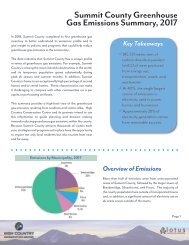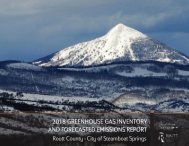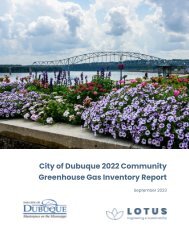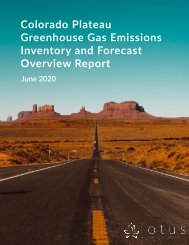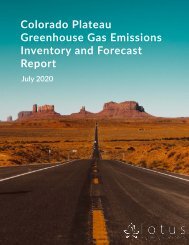Bozeman GHG Emission Report
Transform your PDFs into Flipbooks and boost your revenue!
Leverage SEO-optimized Flipbooks, powerful backlinks, and multimedia content to professionally showcase your products and significantly increase your reach.
Transportation
The transportation sector accounted for 32 percent of Bozeman’s total GHG
emissions (177,593 mt CO2e).
Figure 4 provides a breakdown of the contributing
sources to emissions from the transportation sector.
Emissions from gasoline vehicles (including emissions
from ethanol) made up 53% of transportation emissions
(95,008 mt CO2e) and diesel vehicles made up 24%
(41,932 mt CO2e). Aviation emissions made up 23% of
transportation emissions (39,999 mt CO2e). * Together,
transit vehicles, electric vehicles, and T&D losses from
electric vehicle charging made up under one percent
of total transportation emissions. See Table 2 for more
detail. Between 2018 and 2020, transportation
emissions decreased by 23%. These reductions can
be attributed to COVID-19 impacts and restrictions that
limited travel within Bozeman and across the country.
This trend mirrors the National trend in transportation
emissions between 2018 and 2020, see Figure 13. The
high emissions stemming from gas and diesel vehicles
(77%) mirrors national trends, the data conveys an
opportunity for more sustainable travel.
* Per the GPC protocol, transboundary aviation is defined as “The transportation emissions from large regional transit hubs (e.g., airports or seaports) serving
the city, but outside of the geographic boundary, should be counted in scope 3. These emissions are driven by activities within the city and should be included to
provide a more holistic view of the city’s transportation sector.”
- 11 -




